
Kaghan Valley: Pakistan's Serene Alpine Escape
Kaghan Valley: Experience the pristine beauty and serene landscapes of Pakistan's alpine jewel, perfect for nature lovers and adventure seekers.
Nestled in the heart of Pakistan's Khyber Pakhtunkhwa province, Kaghan Valley is a haven of natural beauty and tranquility. Known for its lush green meadows, sparkling rivers, and towering peaks, this alpine valley offers a refreshing retreat from the hustle and bustle of city life. The valley stretches over 160 kilometers, providing ample opportunities for exploration and adventure. Visitors to Kaghan Valley can enjoy a variety of outdoor activities. The valley is home to the famous Lake Saif-ul-Malook, a picturesque glacial lake situated at an altitude of 3,224 meters. The lake is surrounded by snow-capped mountains and is often shrouded in a mystical mist. Boating on the lake or simply enjoying a picnic on its shores is a must-do activity. For those who love trekking, the valley offers numerous trails that lead to breathtaking viewpoints and hidden waterfalls. Culture and hospitality are also key highlights of Kaghan Valley. The local people are known for their warmth and friendliness. Visitors can immerse themselves in the local culture by visiting traditional markets, trying out local cuisine, and experiencing the vibrant festivals that take place throughout the year. Kaghan Valley is not just a destination; it is an experience that leaves a lasting impression on all who visit.
Local tips in Kaghan
- Visit during the summer months from May to September for the best weather and fully accessible roads.
- Carry warm clothing even in summer; temperatures can drop significantly at night.
- Hire a local guide for trekking to ensure safety and to learn more about the area.
- Pack cash as ATMs are scarce and many places do not accept credit cards.
- Respect local customs and traditions, particularly in rural and less touristy areas.
Kaghan Valley: Pakistan's Serene Alpine Escape
Nestled in the heart of Pakistan's Khyber Pakhtunkhwa province, Kaghan Valley is a haven of natural beauty and tranquility. Known for its lush green meadows, sparkling rivers, and towering peaks, this alpine valley offers a refreshing retreat from the hustle and bustle of city life. The valley stretches over 160 kilometers, providing ample opportunities for exploration and adventure. Visitors to Kaghan Valley can enjoy a variety of outdoor activities. The valley is home to the famous Lake Saif-ul-Malook, a picturesque glacial lake situated at an altitude of 3,224 meters. The lake is surrounded by snow-capped mountains and is often shrouded in a mystical mist. Boating on the lake or simply enjoying a picnic on its shores is a must-do activity. For those who love trekking, the valley offers numerous trails that lead to breathtaking viewpoints and hidden waterfalls. Culture and hospitality are also key highlights of Kaghan Valley. The local people are known for their warmth and friendliness. Visitors can immerse themselves in the local culture by visiting traditional markets, trying out local cuisine, and experiencing the vibrant festivals that take place throughout the year. Kaghan Valley is not just a destination; it is an experience that leaves a lasting impression on all who visit.
When is the best time to go to Kaghan?
Iconic landmarks you can’t miss
Saif-ul-Maluk Lake
Explore the serene beauty of Saif-ul-Maluk Lake, a breathtaking glacial oasis in Khyber Pakhtunkhwa, Pakistan, surrounded by majestic mountains.
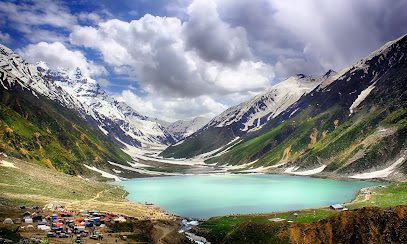
Lulusar-Dudipatsar National Park
Explore the breathtaking landscapes and serene lakes of Lulusar-Dudipatsar National Park, a paradise for nature lovers and adventure seekers in Pakistan.
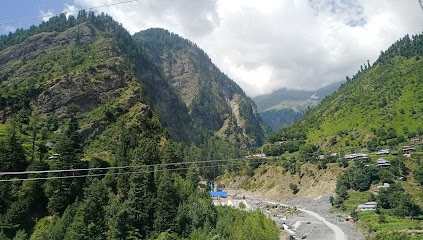
Naran Valley
Explore the breathtaking beauty of Naran Valley, a scenic ravine in Khyber Pakhtunkhwa, Pakistan, perfect for adventure and nature lovers.
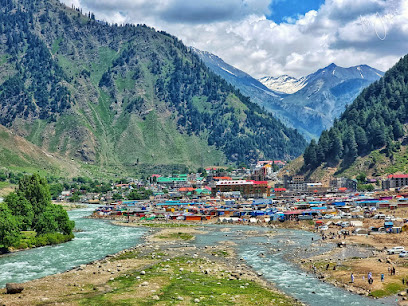
Kaghan Valley
Explore the breathtaking landscapes and serene beauty of Kaghan Valley, a top destination for nature lovers and adventure seekers in Pakistan.
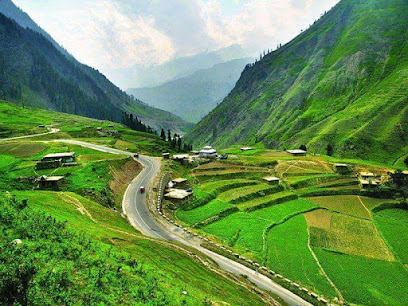
PTDC Motels, Naran
Experience the serene beauty of Naran at PTDC Motels, your gateway to adventure and relaxation in the heart of Khyber Pakhtunkhwa.

Lalazar
Discover the stunning beauty of Lalazar, a captivating tourist attraction in Khyber Pakhtunkhwa, perfect for hiking and nature exploration.
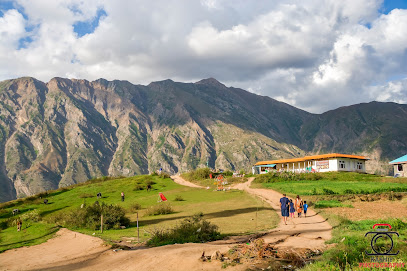
Sprucewoods Luxury Resort
Discover the tranquility of Sprucewoods Luxury Resort in Kaghan Valley, where luxury meets nature amidst breathtaking views and exquisite dining.

Paya Meadows
Explore the breathtaking Paya Meadows, a serene tourist attraction in Khyber Pakhtunkhwa, perfect for nature lovers and adventure seekers alike.
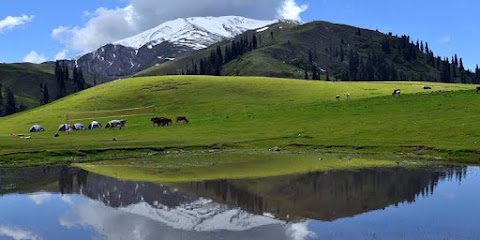
Parhena Cottages
Experience the breathtaking beauty and tranquility of Naran at Parhena Cottages, your perfect retreat in the heart of Khyber Pakhtunkhwa.
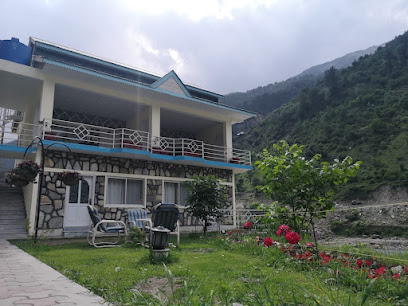
Ansoo Lake
Discover the mesmerizing Ansoo Lake in Khyber Pakhtunkhwa, Pakistan—an extraordinary tear-shaped lake surrounded by breathtaking mountain scenery.
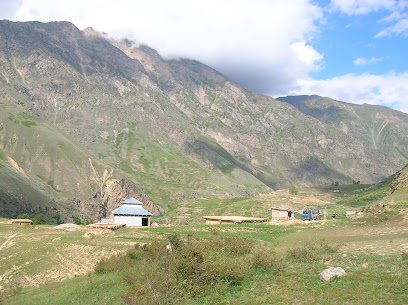
Shogran Siri paye Tour
Experience tranquility and adventure at Shogran Siri Paye, a breathtaking destination in Khyber Pakhtunkhwa, Pakistan, perfect for nature lovers.
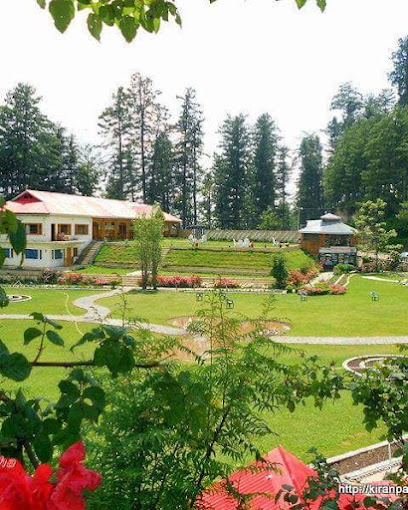
Pyala Lake
Experience the serene beauty of Pyala Lake in Mansehra, Khyber Pakhtunkhwa – a hidden gem surrounded by mountains and lush greenery.
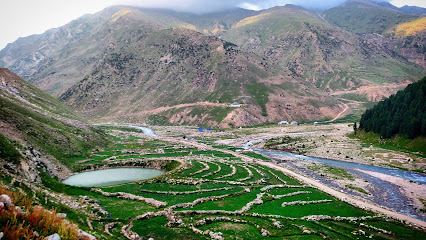
Musa ka Musalla
Discover the breathtaking beauty of Musa ka Musalla, a mountain peak in Khyber Pakhtunkhwa, perfect for hiking and immersing in nature's tranquility.
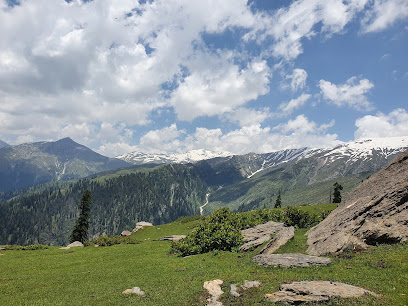
Payee Lake
Experience the serene beauty and adventure at Payee Lake in Khyber Pakhtunkhwa, a hidden gem surrounded by majestic mountains and lush forests.

Malika Parbat
Discover the breathtaking beauty of Malika Parbat, a majestic mountain peak in Khyber Pakhtunkhwa, perfect for trekking and adventure seekers.
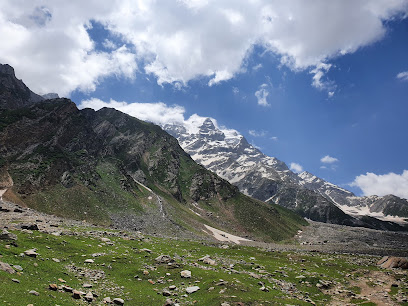
Unmissable attractions to see
Saif-ul-Maluk Lake
Discover the breathtaking beauty of Saif-ul-Maluk Lake in Mansehra, Khyber Pakhtunkhwa, where nature meets adventure in a stunning alpine setting.
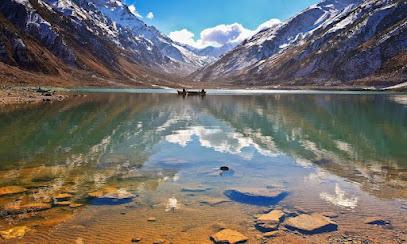
Kiwai Waterfall
Discover the enchanting beauty of Kiwai Waterfall, where nature's tranquility meets adventure in the heart of Khyber Pakhtunkhwa.
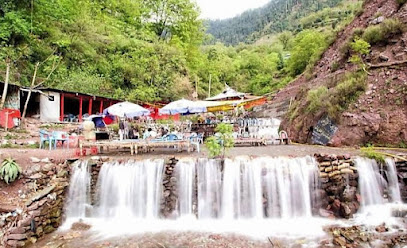
Bridge of Jheel Saif Ul Malook
Discover the breathtaking beauty of the Bridge of Jheel Saif Ul Malook, a serene natural wonder in Pakistan's stunning Naran Valley.
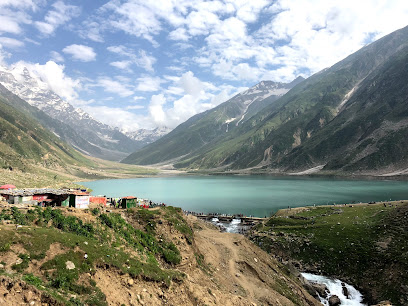
Kaghan Valley
Discover the breathtaking beauty of Kaghan Valley, a stunning ravine in Khyber Pakhtunkhwa, perfect for nature lovers and adventure seekers alike.
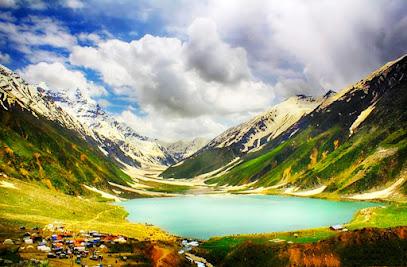
Kiwai Village
Discover Kiwai Village, a serene escape in the Kaghan Valley with stunning landscapes, rich culture, and heartwarming hospitality.
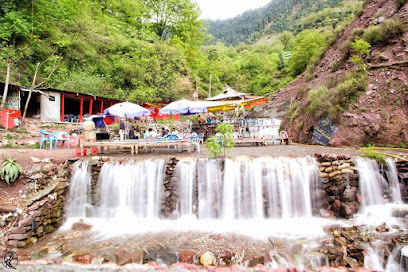
Saif ul Maluk Lake
Explore the stunning Saif ul Maluk Lake, a breathtaking glacial gem nestled in the mountains of Khyber Pakhtunkhwa, Pakistan, perfect for nature lovers and adventurers.
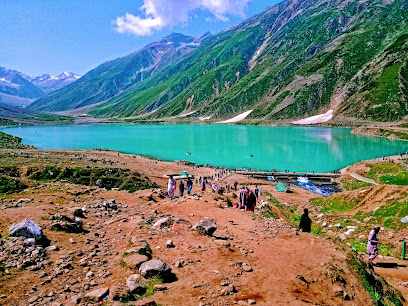
Lalazar
Discover the breathtaking beauty of Lalazar in Khyber Pakhtunkhwa, a stunning hiking area perfect for adventure lovers and nature enthusiasts.
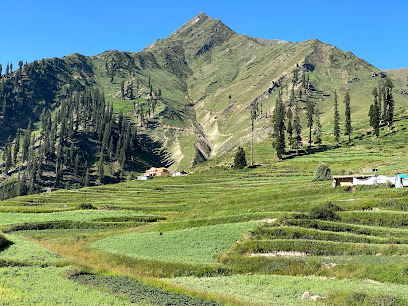
Shogran
Explore Shogran Valley, a breathtaking tourist attraction in Khyber Pakhtunkhwa, renowned for its stunning landscapes, lush meadows, and serene mountain views.

Sharan Forest
Explore the breathtaking beauty of Sharan Forest in Mansehra, Khyber Pakhtunkhwa – a serene escape for nature lovers and adventure seekers.
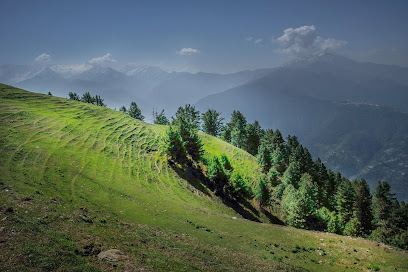
Sohni Waterfall
Experience the breathtaking beauty of Sohni Waterfall, a hidden gem in Khyber Pakhtunkhwa offering stunning views and serene nature.
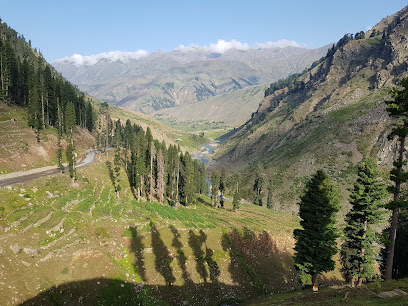
Ansu Lake آنسو جھیل
Discover the serene beauty of Ansu Lake, a glacial gem in Khyber Pakhtunkhwa, perfect for adventurers and nature enthusiasts alike.
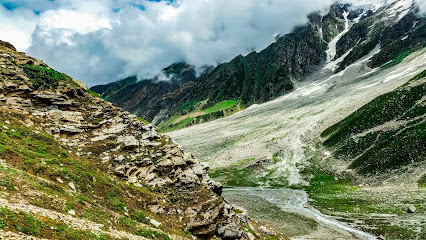
Manshi Top
Discover the breathtaking beauty of Manshi Top in Khyber Pakhtunkhwa, a perfect escape for nature lovers and adventure seekers alike.
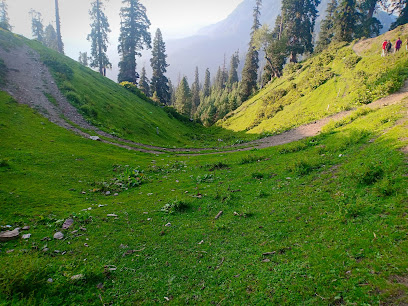
Kiswah Ford (Water Crossing)
Discover the natural beauty and adventure of Kiswah Ford, a stunning water crossing in Batakundi, Khyber Pakhtunkhwa, Pakistan.
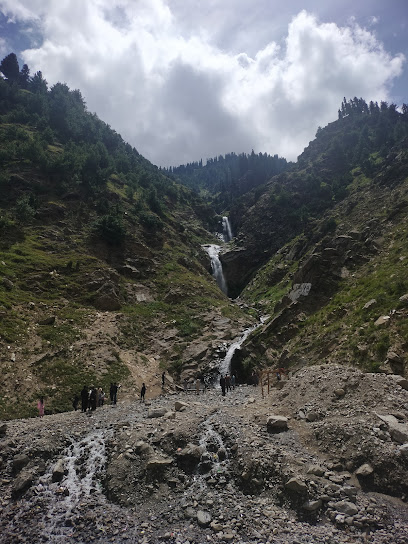
Sharan Waterfall
Experience the breathtaking beauty of Sharan Waterfall in Mansehra, Khyber Pakhtunkhwa - a hidden gem for nature lovers and adventurers.
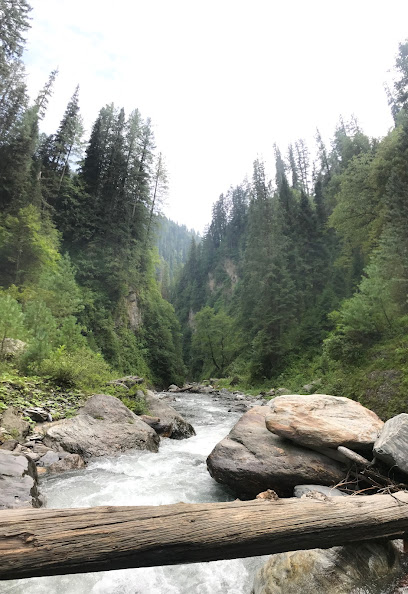
Mountains Forest
Discover the serene beauty of the Mountains Forest in Shogran, a national treasure in Khyber Pakhtunkhwa, ideal for nature lovers and adventure seekers.
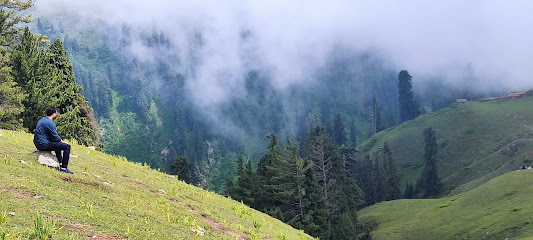
Essential places to dine
Moon Restaurant
Experience authentic Pakistani cuisine with stunning views at Moon Restaurant in Naran - where taste meets tranquility.
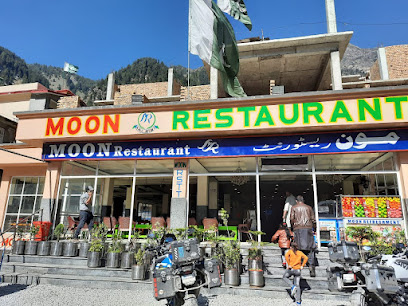
Punjab Tikka House - (Naran)
Discover authentic Pakistani flavors at Punjab Tikka House in Naran - where every bite tells a story.
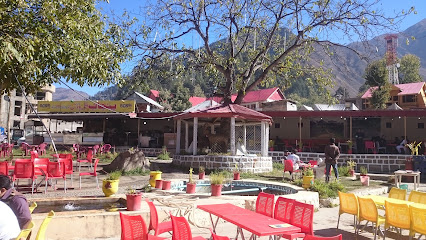
Malkandi Trout Fish Restaurant
Discover Malkandi Trout Fish Restaurant: Fresh trout delicacies amidst breathtaking views in Balakot, Khyber Pakhtunkhwa.
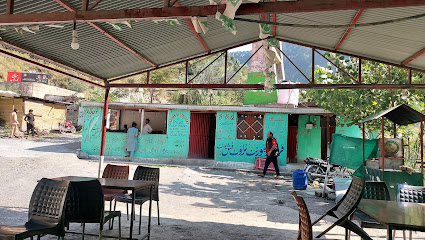
Usmania Restaurant
Discover authentic Pakistani cuisine in the serene surroundings of Kaghan Valley at Usmania Restaurant.
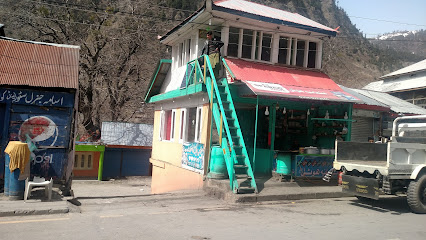
The Troutland Hotel & Restaurant
Experience culinary bliss at The Troutland Hotel & Restaurant, nestled in Kaghan Valley's breathtaking landscape offering local flavors and warm hospitality.
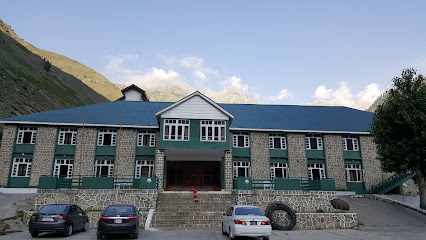
Babu Restaurant
Experience authentic Pakistani cuisine at Babu Restaurant in Balakot – where every dish tells a story.
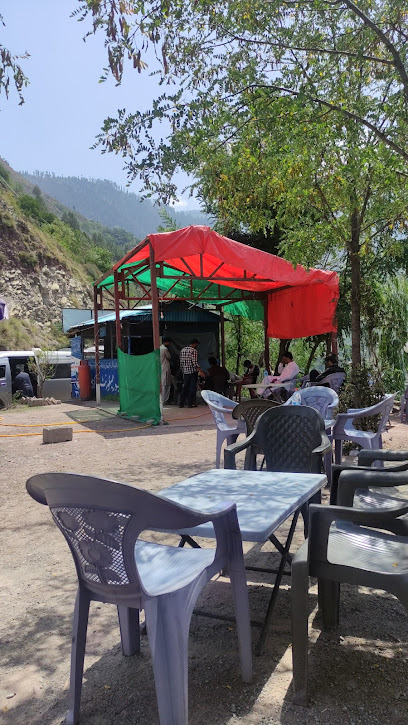
Rock City Hotel and Restaurant Kaghan
Discover exquisite local flavors at Rock City Hotel and Restaurant amidst Kaghan Valley's breathtaking landscapes.
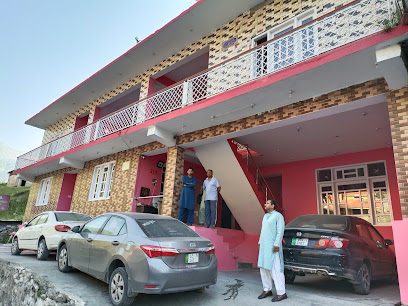
Badar Hotel & Restaurant and Trout Fish Point
Discover the flavors of Kaghan at Badar Hotel & Restaurant – where delicious cuisine meets breathtaking mountain views.
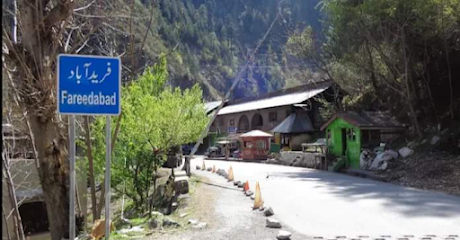
Paradise Motel Chinese Restaurant
Savor authentic Chinese cuisine while surrounded by the breathtaking beauty of Shogran's mountains.
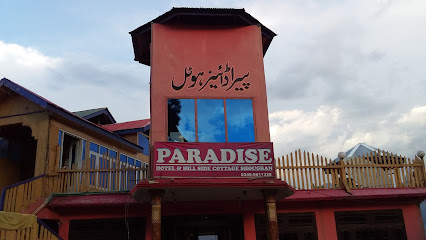
Shino Trout Restaurant
Experience fresh trout dishes in a serene setting at Shino Trout Restaurant in Khyber Pakhtunkhwa.
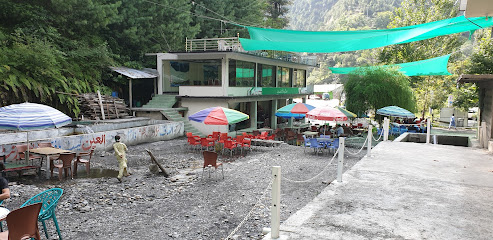
The Pizza Art
Discover delicious fast food at The Pizza Art in Naran, Pakistan - where every slice is crafted with love amid breathtaking mountain views.
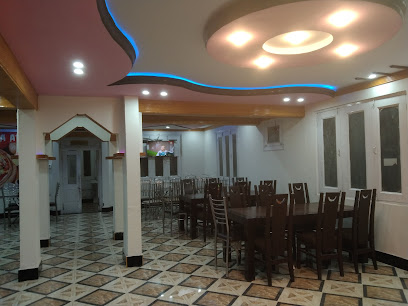
Manshee Breeze Hotel & Chinese Restaurant
Experience authentic Chinese cuisine amidst breathtaking mountain views at Manshee Breeze Hotel & Chinese Restaurant in Shogran.
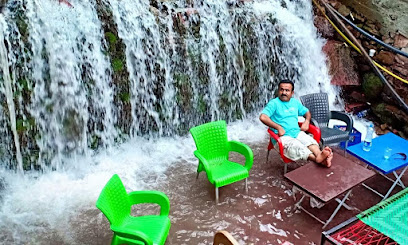
Butt Tikka Karahi
Discover the savory delights of Butt Tikka Karahi in Naran - where authentic barbecue meets breathtaking mountain views.
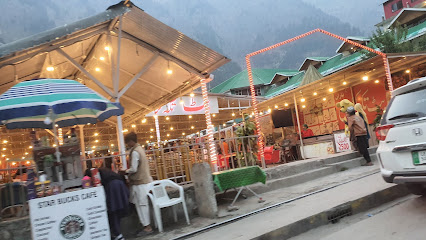
Trout Fish Point and Restaurant
Experience exquisite trout dishes surrounded by breathtaking landscapes at Trout Fish Point Restaurant in Khyber Pakhtunkhwa.
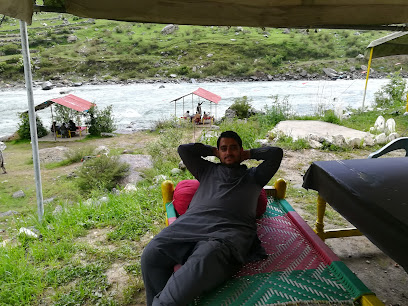
Green Wood Hotel & Restaurant
Experience unparalleled dining and serene accommodations at Green Wood Hotel & Restaurant in scenic Mansehra.

Markets, malls and hidden boutiques
Srinagar shawl Naran
Discover the exquisite shawls and handicrafts at Srinagar Shawl Naran, a vibrant shopping mall in the heart of Naran, Khyber Pakhtunkhwa.
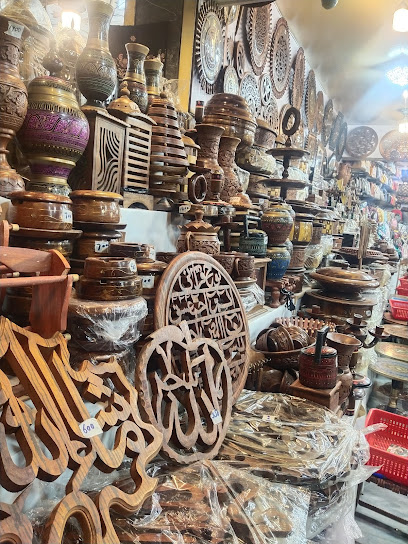
Naran Bazaar
Experience the vibrant culture and unique shopping at Naran Bazaar, a treasure trove of local crafts and traditional goods in Pakistan.
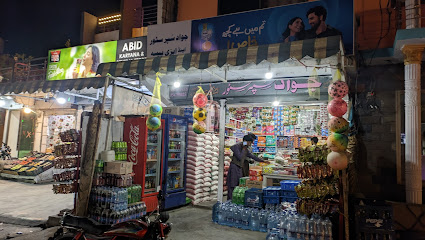
Fotoking-Aljanat Super store
Discover the essence of Khyber Pakhtunkhwa at Fotoking-Aljanat Superstore, offering unique local crafts and a warm shopping experience in Naran.
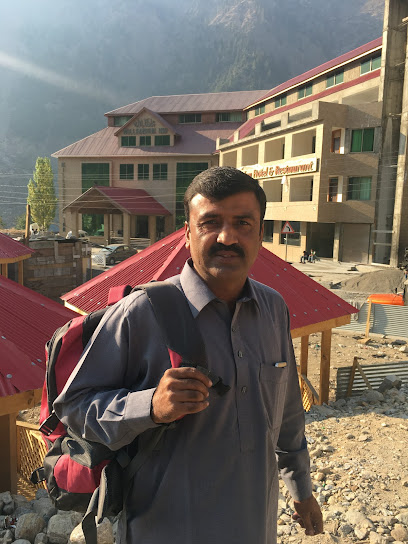
Wasiq Kriyana & Dry Fruits
Discover authentic flavors and vibrant shopping at Wasiq Kriyana & Dry Fruits in Mansehra, a must-visit for every traveler in Khyber Pakhtunkhwa.
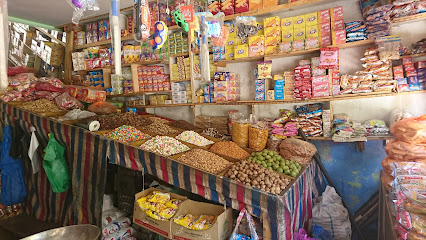
ZAM ZAM GENRAL STOR
Discover the charm of Zam Zam General Store in Kaghan Valley, offering essentials and local delights amid breathtaking scenery.
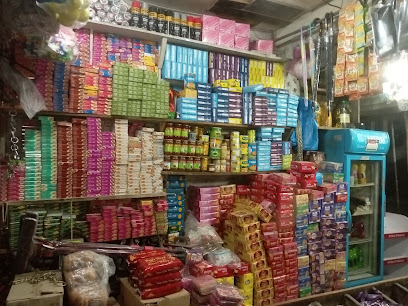
Naran Super Store
Naran Super Store is your go-to destination for local treasures, essentials, and snacks in the breathtaking Naran region of Khyber Pakhtunkhwa.
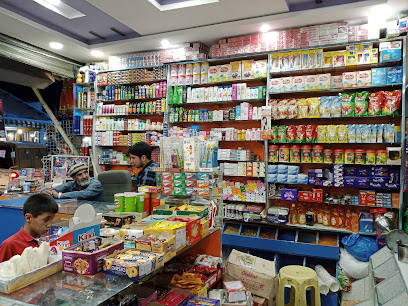
General Store
Explore the authentic charm of Allai at the General Store, where local culture and unique products come together in the heart of Khyber Pakhtunkhwa.

Tahir Silk Center
Discover the rich heritage of silk craftsmanship at the Tahir Silk Center in Mahandri, a treasure trove for textile lovers.
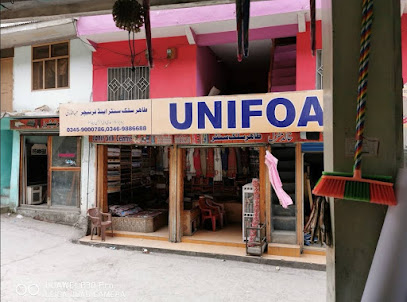
Karachi Super store
Explore local flavors and essentials at Karachi Super Store, your go-to grocery destination in Naran, Khyber Pakhtunkhwa.

Ahead Computer
Explore the latest in technology at Ahead Computer, a local tech haven in Mansehra, Khyber Pakhtunkhwa, Pakistan.

Styles Mall
Discover quality workwear at Styles Mall in Naran, where style meets functionality in the heart of Khyber Pakhtunkhwa.
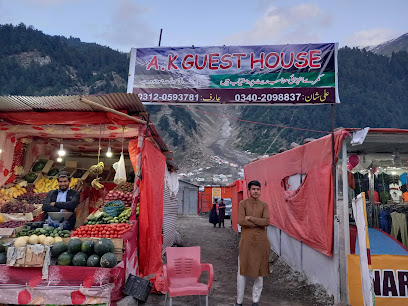
باجوڑ گفٹ سنٹر ناران
Discover unique souvenirs and local handicrafts at Bajaur Gift Center Naran, a must-visit shopping destination for tourists seeking authentic treasures.
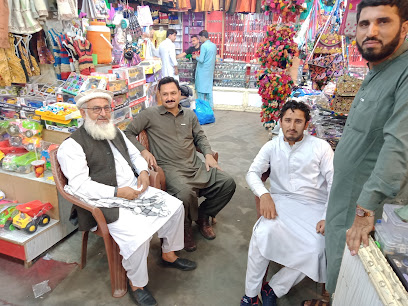
Pak super store pss)
Discover local flavors and essentials at Pak Super Store, your ultimate grocery shopping destination in the heart of Naran.
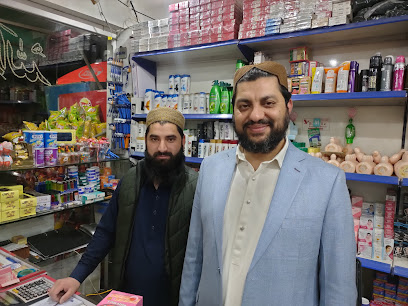
Billa G pan Shop Naran
Discover the vibrant flavors of Naran at Billa G Pan Shop, a local favorite for traditional snacks and a cultural experience.
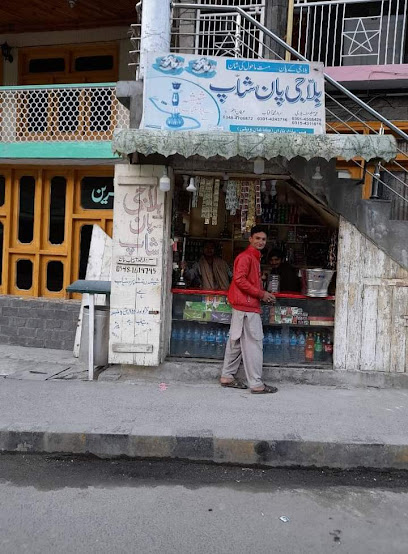
Naran Handicraft And Toys
Explore Naran Handicraft and Toys for authentic local crafts and unique toys in the heart of Khyber Pakhtunkhwa's vibrant marketplace.
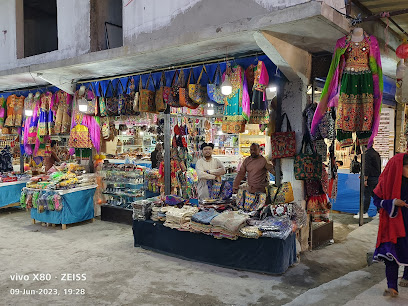
Essential bars & hidden hideouts
Moon Restaurant
Experience the vibrant tastes of Pakistani cuisine at Moon Restaurant, set against the stunning backdrop of Naran's majestic mountains.
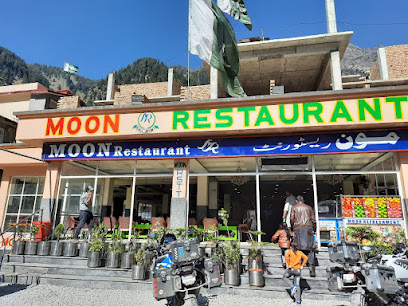
Ahsania Hotel & Restaurant
Discover the enchanting Ahsania Hotel & Restaurant, a resort hotel offering culinary delights and comfort amidst the stunning landscapes of Kaghan Valley.
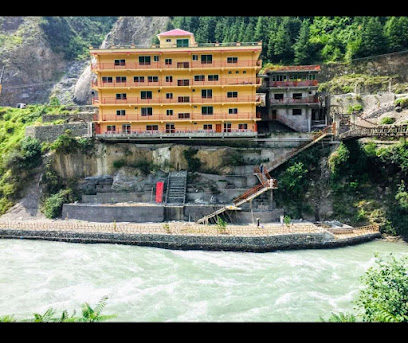
The Troutland Hotel & Restaurant
Experience the flavors of Kaghan Valley at The Troutland Hotel & Restaurant, where stunning views meet exceptional cuisine.
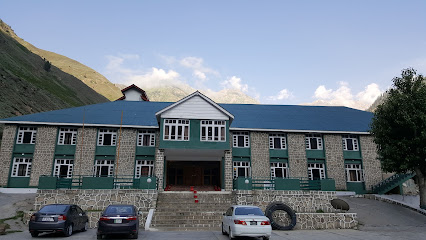
kaghan colony hill
Experience the breathtaking beauty and tranquility of Kaghan Colony Hill in Abbottabad, the perfect escape for nature lovers and adventure seekers.
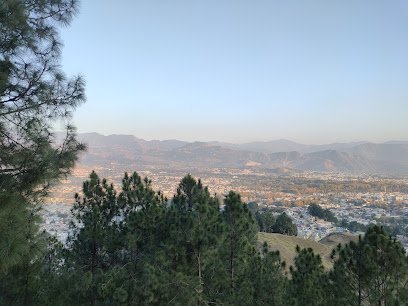
Bismillah Hotel & Chappal Kabab Sarfaraz
Discover the rich flavors of Khyber Pakhtunkhwa at Bismillah Hotel & Chappal Kabab Sarfaraz in Naran, where culinary excellence meets breathtaking views.
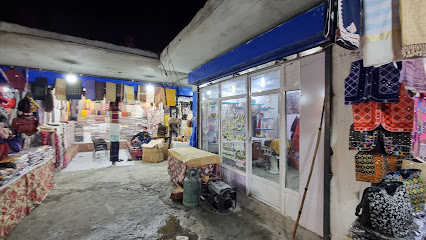
Barbecue Delight Hotel and Restaurant
Experience the perfect blend of local barbecue flavors and hospitality at Barbecue Delight Hotel and Restaurant in Naran, Khyber Pakhtunkhwa.
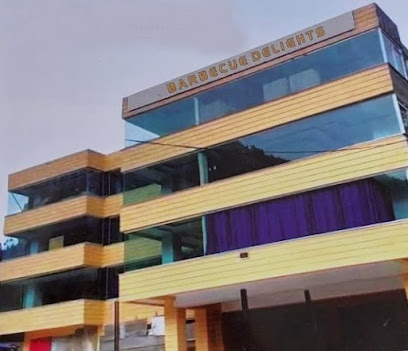
Naran Food Street
Explore the culinary delights of Naran Food Street, where authentic Pakistani flavors come alive in a vibrant atmosphere.
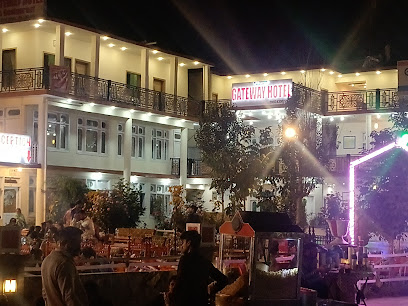
Jaazi Khan Hujra
Discover the vibrant spirit of Jaazi Khan Hujra, where local culture meets a lively bar atmosphere in the heart of Khyber Pakhtunkhwa.

THE COOK & COOK
Discover The Cook & Cook in Mansehra, where local flavors meet a cozy bar atmosphere for an unforgettable culinary experience.
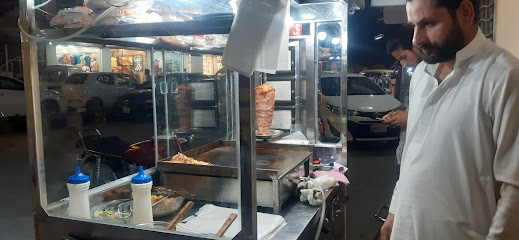
پانی کا چشمہ
Experience the serene beauty of پانی کا چشمہ, a charming bar in Mansehra, where nature meets tranquility and hospitality.
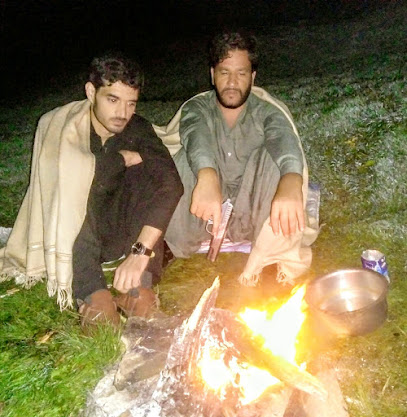
Banni stop
Discover Banni Stop, the perfect stand bar to unwind amidst the stunning landscapes of Mansehra, Khyber Pakhtunkhwa, Pakistan.

Faizan khan Law chamber
Explore the fusion of law and leisure at Faizan Khan Law Chamber in Mansehra, where local culture comes alive in a unique setting.

Anis Gaming zone
Discover Anis Gaming Zone in Khaki, a vibrant bar offering gaming, drinks, and a welcoming atmosphere for tourists and locals alike.

Almakka kobbabgees hotel and restaurants
Discover the authentic flavors and warm hospitality of Khyber Pakhtunkhwa at Almakka Kobbabgees Hotel and Restaurant in Mansehra.

Tanawal Press Club &union Of Jouranalist (R)
Experience the vibrant local culture at Tanawal Press Club, a bar where journalists gather and stories come alive in Mansehra, Khyber Pakhtunkhwa.
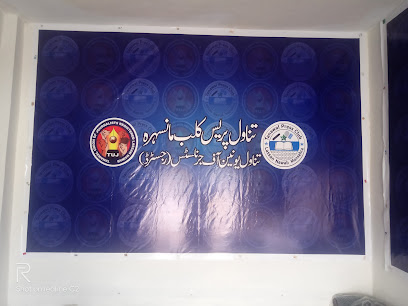
Local Phrases
-
- Helloسلام
[salaam] - Goodbyeخدا حافظ
[khuda hafiz] - Yesہاں
[haan] - Noنہیں
[nahin] - Please/You're welcomeبراہ کرم
[barah e karam] - Thank youشکریہ
[shukriya] - Excuse me/Sorryمعاف کیجیے
[maaf kijiye] - How are you?آپ کیسے ہیں؟
[aap kaise hain?] - Fine. And you?ٹھیک ہوں۔ آپ؟
[theek hoon. aap?] - Do you speak English?کیا آپ انگریزی بولتے ہیں؟
[kya aap angrezi bolte hain?] - I don't understandمجھے سمجھ نہیں آیا
[mujhe samajh nahi aya]
- Helloسلام
-
- I'd like to see the menu, pleaseبراہ کرم مینو دیکھنا چاہیے
[barah e karam menu dekhna chahiye] - I don't eat meatمیں گوشت نہیں کھاتا
[main gosht nahi khaata] - Cheers!خوش رہیں!
[khush rahen] - I would like to pay, pleaseبراہ کرم ادا کرنا چاہیے
[barah e karam ada karna chahiye]
- I'd like to see the menu, pleaseبراہ کرم مینو دیکھنا چاہیے
-
- Help!مدد!
[madad!] - Go away!دور ہو جاؤ!
[door ho jao!] - Call the Police!پولیس کو بلاؤ!
[police ko bulao!] - Call a doctor!ڈاکٹر کو بلاؤ!
[doctor ko bulao!] - I'm lostمیں گم ہو گیا ہوں
[main gum ho gaya hoon] - I'm illمیں بیمار ہوں
[main bimar hoon]
- Help!مدد!
-
- I'd like to buy...میں خریدنا چاہتا ہوں
[main khareedna chahta hoon] - I'm just lookingمیں صرف دیکھ رہا ہوں
[main sirf dekh raha hoon] - How much is it?یہ کتنے کا ہے؟
[yeh kitne ka hai?] - That's too expensiveیہ بہت مہنگا ہے
[yeh bohot mehnga hai] - Can you lower the price?کیا آپ قیمت کم کر سکتے ہیں؟
[kya aap qeemat kam kar sakte hain?]
- I'd like to buy...میں خریدنا چاہتا ہوں
-
- What time is it?کتنا بجا ہوا ہے؟
[kitna baja hua hai?] - It's one o'clockایک بجا ہے
[aik baja hai] - Half past (10)دس بج کر پندرہ منٹ ہوتے ہیں
[das baj kar pandra minute hote hain] - Morningصبح
[subah] - Afternoonدوپہر
[dopehar] - Eveningشام
[shaam] - Yesterdayگزشتہ کل
[guzishta kal] - Todayآج
[aaj] - Tomorrowکل
[kal] - 1ایک
[aik] - 2دو
[do] - 3تین
[teen] - 4چار
[chaar] - 5پانچ
[paanch] - 6چھے
[chhe] - 7سات
[saat] - 8آٹھ
[aath] - 9نو
[no] - 10دس
[das]
- What time is it?کتنا بجا ہوا ہے؟
-
- Where's a/the...?...کہاں ہے؟
[...kahan hai?] - What's the address?پتہ کیا ہے؟
[pata kya hai?] - Can you show me (on the map)?کیا آپ مجھے دکھا سکتے ہیں؟
[kya aap mujhe dikh sakte hain?] - When's the next (bus)?اگلی (بس) کب ہے؟
[agli (bus) kab hai?] - A ticket (to ....)ایک ٹکٹ (کو ...)
[aik ticket (ko ...)]
- Where's a/the...?...کہاں ہے؟
History of Kaghan
-
Kaghan Valley's history dates back to ancient times. The region was originally inhabited by the Dardic people, known for their unique language and culture. Archaeological evidence suggests that the valley has been a hub of human activity for thousands of years.
-
During the 1st millennium BCE, Kaghan Valley was a part of the Gandhara civilization, which stretched from modern-day Afghanistan to the Punjab region of Pakistan. Gandhara was a melting pot of cultures and is known for its significant contributions to Buddhist art and architecture.
-
In 327 BCE, Alexander the Great passed through the northern regions of Pakistan, including areas around Kaghan Valley, during his campaign against the Persian Empire. His expedition brought the valley into contact with Greek culture, leaving a lasting impact on the region.
-
By the 7th century CE, Islamic influence began to permeate Kaghan Valley. The region saw the arrival of Muslim traders and missionaries, and eventually came under the rule of various Islamic empires, including the Ghaznavids and the Delhi Sultanate.
-
The Mughal Empire, which ruled much of South Asia from the early 16th to the mid-18th century, also extended its influence to Kaghan Valley. The Mughals were known for their patronage of art, culture, and architecture. Though the valley remained relatively isolated, it benefited from the broader stability and economic prosperity of the empire.
-
During the British colonial period in the 19th and early 20th centuries, Kaghan Valley became a popular retreat for British officials seeking respite from the heat of the plains. The British built several rest houses and introduced modern infrastructure, including roads and telecommunication lines.
-
After Pakistan gained independence in 1947, Kaghan Valley saw significant development. The government invested in infrastructure projects, promoting tourism as a key economic activity. The valley became a popular destination for both domestic and international tourists, known for its stunning landscapes and rich cultural heritage.
Kaghan Essentials
-
Kaghan Valley is located in the Mansehra District of Khyber Pakhtunkhwa province in Pakistan. The nearest major city is Islamabad, which has an international airport (Islamabad International Airport). From Islamabad, you can travel to Kaghan by road, which usually takes around 5-6 hours. There are private car rentals, taxis, and buses available for the journey. The route takes you through picturesque landscapes, making the road trip a scenic experience.
-
Within Kaghan Valley, local transportation options include jeeps, taxis, and buses. Jeeps are the most popular choice for tourists due to the rugged terrain and are readily available for hire. Taxis can be found in major towns like Naran and Balakot. Public buses and minibuses connect different parts of the valley, but they can be crowded. Renting a car is also an option if you prefer to explore at your own pace, though driving conditions can be challenging.
-
The official currency in Pakistan is the Pakistani Rupee (PKR). Credit and debit cards are accepted in some hotels, restaurants, and shops, but it's advisable to carry cash, especially in smaller towns and rural areas. ATMs are available in the bigger towns like Naran and Balakot, but it’s a good idea to withdraw sufficient cash in Islamabad before your journey to Kaghan.
-
Kaghan Valley is generally safe for tourists, but standard precautions should be taken. Avoid walking alone at night in unfamiliar areas and keep an eye on your belongings in crowded places. While the area does not have specific high-crime neighborhoods targeting tourists, it is always best to stay vigilant and aware of your surroundings. Be cautious of the weather conditions, as heavy rains can lead to landslides and road blockages.
-
In case of an emergency, dial 1122 for immediate assistance. The nearest medical facilities are in Naran and Balakot, with basic healthcare services available. For more serious medical emergencies, you may need to travel back to larger cities like Abbottabad or Islamabad. It's highly recommended to have travel insurance that covers medical emergencies. Local police stations are available in major towns for any security-related issues.
-
Fashion: Do dress modestly, especially when visiting religious sites. Avoid wearing revealing clothing. Religion: Do respect local customs and traditions. Always cover your head when entering mosques. Public Transport: Do be respectful and give up your seat to elderly passengers. Don’t eat or drink on public transport. Greetings: Do greet people with a handshake; a slight nod or traditional 'Assalamu Alaikum' is also appreciated. Eating & Drinking: Do try local delicacies like chapli kebabs and trout fish. Don’t refuse hospitality, as it is considered impolite.
-
To experience Kaghan like a local, visit the weekly bazaars where you can buy fresh produce and traditional Pakistani goods. Engage with the locals, as they are often friendly and willing to share stories about the valley’s history and culture. Don’t miss visiting Saif-ul-Malook Lake, which is one of the most picturesque spots in the valley. For a unique experience, take a jeep ride to Babusar Pass, which offers breathtaking views of the surrounding mountains.
Nearby Cities to Kaghan
-
Things To Do in Naran
-
Things To Do in Abbottabad
-
Things To Do in Murree
-
Things To Do in Swat
-
Things To Do in Islamabad
-
Things To Do in Rawalpindi
-
Things To Do in Gilgit
-
Things To Do in Chitral
-
Things To Do in Skardu
-
Things To Do in Peshawar
-
Things To Do in Jammu
-
Things To Do in Sialkot
-
Things To Do in Gujranwala
-
Things To Do in Lahore
-
Things To Do in Amritsar










